Supersize Your Muscle and Strength Gains with These Compound Exercises and Workouts
Not including compound exercises in your programme is on par with forgetting your headphones or not re-racking your weights. It's a fitness faux pas that experts unanimously agree, should be avoided at all costs.
Fortunately, you’re probably already incorporating compound exercises into your routine without even realising it. These exercises include some of the most common and effective movements in the gym.
Below, you'll discover what compound exercises are, their benefits, how to nail the technique and we'll answer some compound exercises FAQs to ensure you're using them optimally and building full-body muscle.
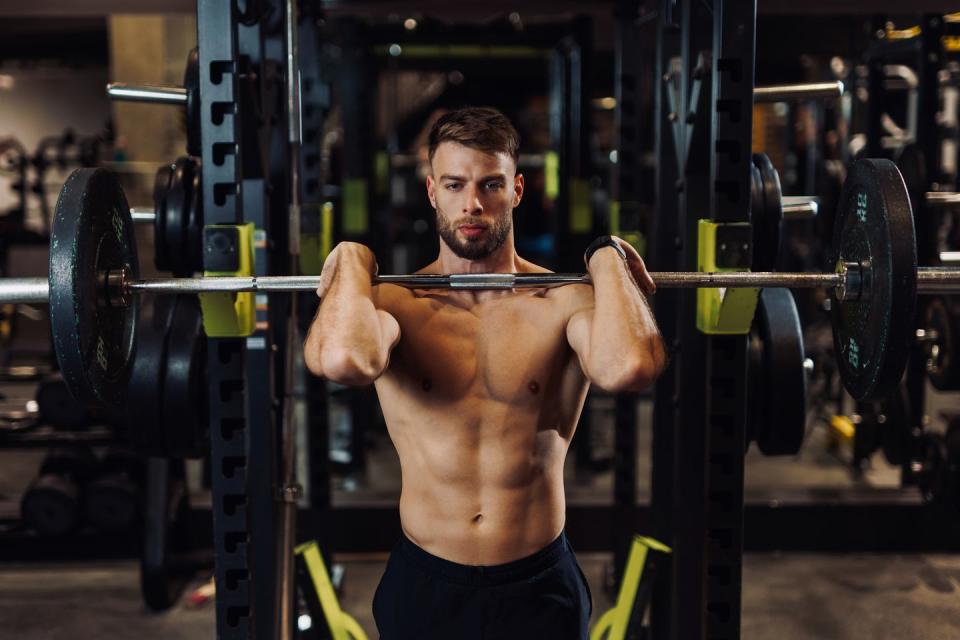
What Are Compound Exercises?
Compound exercises are multi-joint moves that use several muscle groups at once. For example, the squat uses the quadriceps, hamstrings, glutes, calves and core muscles at the same time. Some compound exercises – and the muscles they work – include:
Squat: quads, glutes, hamstrings, calves and core.
Bench press: pecs, shoulders and triceps.
Deadlift: hamstrings, glutes, quads, lats, traps and core.
Pull up: lats, biceps, triceps, traps, rear delts and core.
Lunge: quads, glutes, hamstrings, calves and core.
Shoulder press: shoulders, pecs, traps and triceps.
Bent-over row: lats, traps, rhomboids and rear delts.
What Are the Benefits of Compound Exercises?
The benefits of compound exercises are countless. Although, the most important benefits include:
Enhanced Hypertrophy
Compound lifts engage large muscle groups, promoting overall strength and muscle development. A review published in the Journal of Strength & Conditioning Research found that when following the principle of the progressive overload principle, compound exercises activate the three key components for building muscle: mechanical tension, muscle damage and metabolic stress.
Time Saving
Incorporating compound lifts into your workout routine can save time compared to isolating individual muscles. They target multiple muscle groups simultaneously, allowing you to get more done. This is supported by a review published in Sports Medicine, which states that we should prioritise bilateral, multi-joint exercises (compound exercises) in order to save time.
Elevated Heart Rate
Since they involve multiple muscles, compound lifts can elevate your heart rate more than isolation exercises and potentially help you burn more calories during workouts. A study published in Frontiers, which compared compound and isolation exercises, found that multi joint exercises had a greater effect on cardiovascular fitness and VO2 max.
Increased Testosterone
Compound lifts stimulate the release of hormones like testosterone and growth hormone, which aid in muscle growth. Evidence published in the European Journal of Applied Physiology found that performing larger muscle group compound exercises before smaller muscle group exercises created a significant increase in testosterone.
What Are the 7 Best Compound Exercises?
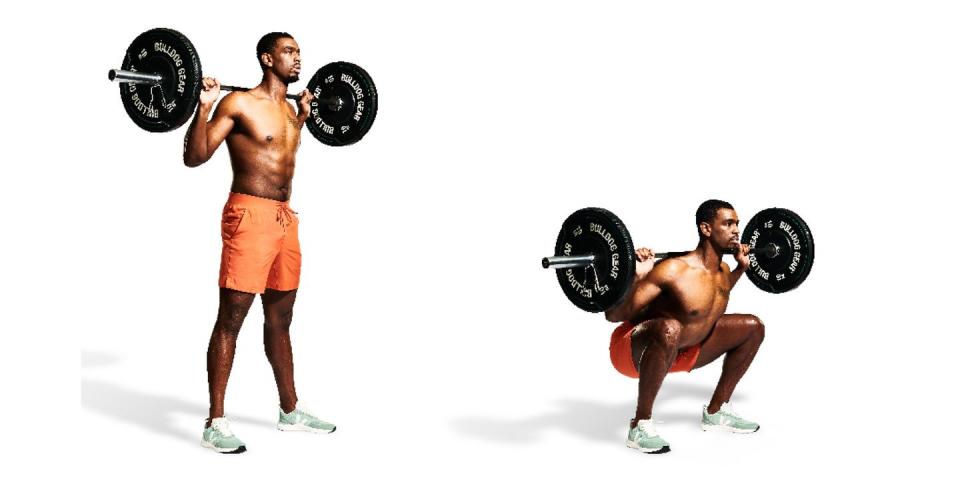
Back Squat
How: Begin by grabbing the barbell a little wider than shoulder-width apart and un-rack the barbell with it on the meaty part of your shoulders, behind your head. Maintain an upright torso and push your hips back into a squat, bending your knees until your thighs pass parallel to the floor. Stand back up to the start position.
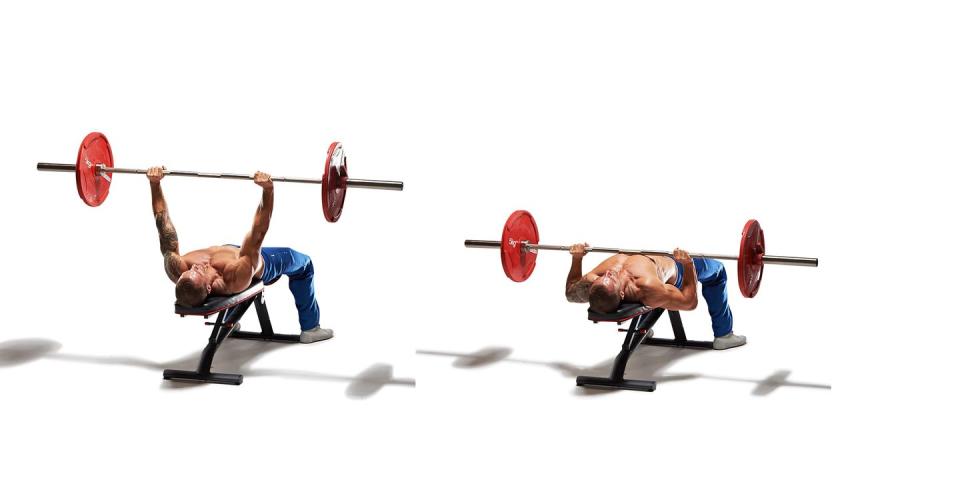
Bench Press
How: Lay flat on a bench, with your knees bent, pushing your feet into the floor. Take the weight off the rack, locking out your elbows. Lower the bar slowly until it touches your chest. Keep your elbows at a 45-degree angle, pause here before explosively pressing back up.
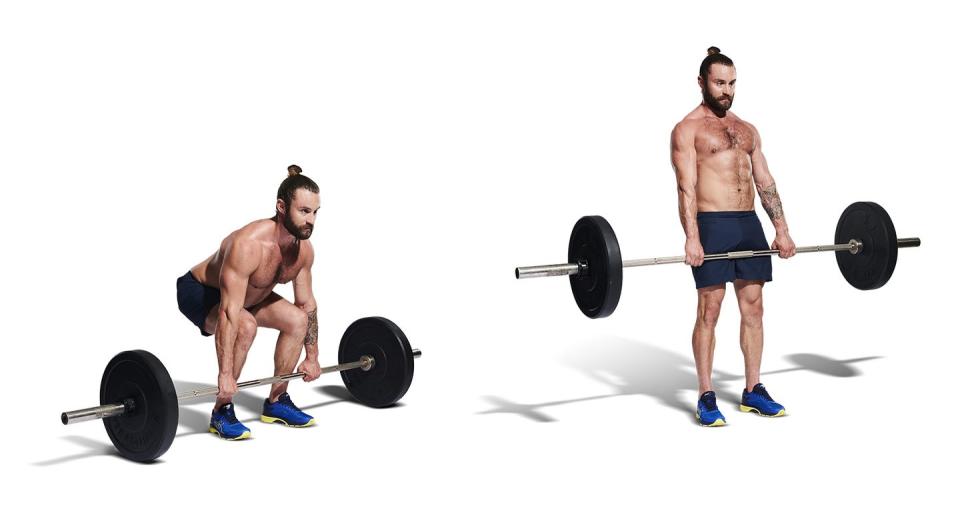
Deadlift
How: Walk your shins to the bar with your feet underneath your hips. Send your hips behind your heels and reach your hands towards the bar. Your shoulders should be over the bar and middle foot underneath. Keeping your back and head in line, put your shoulder blades in your back pockets while holding your torso rigid to create tension between you and the bar. You should hear the plates clink. Push the floor away from you while keeping the bar close. Lock out the hips without sending the weight back and reverse the movement.
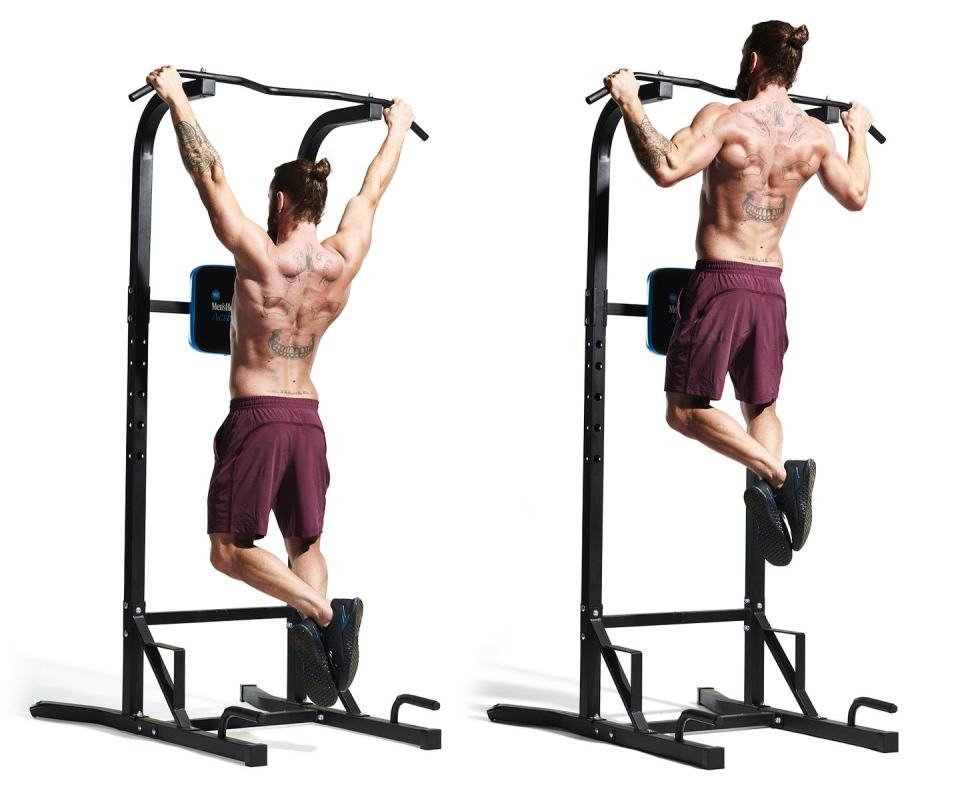
Pull-Up
How: Grab a pull-up bar with an overhand grip with you hands over shoulder-width apart. Lift your feet from the floor, hanging freely with straight arms. Pull yourself up by flexing the elbows, while pinching your shoulder blades together. When your chin passes the bar pause, before lowering to the starting position.
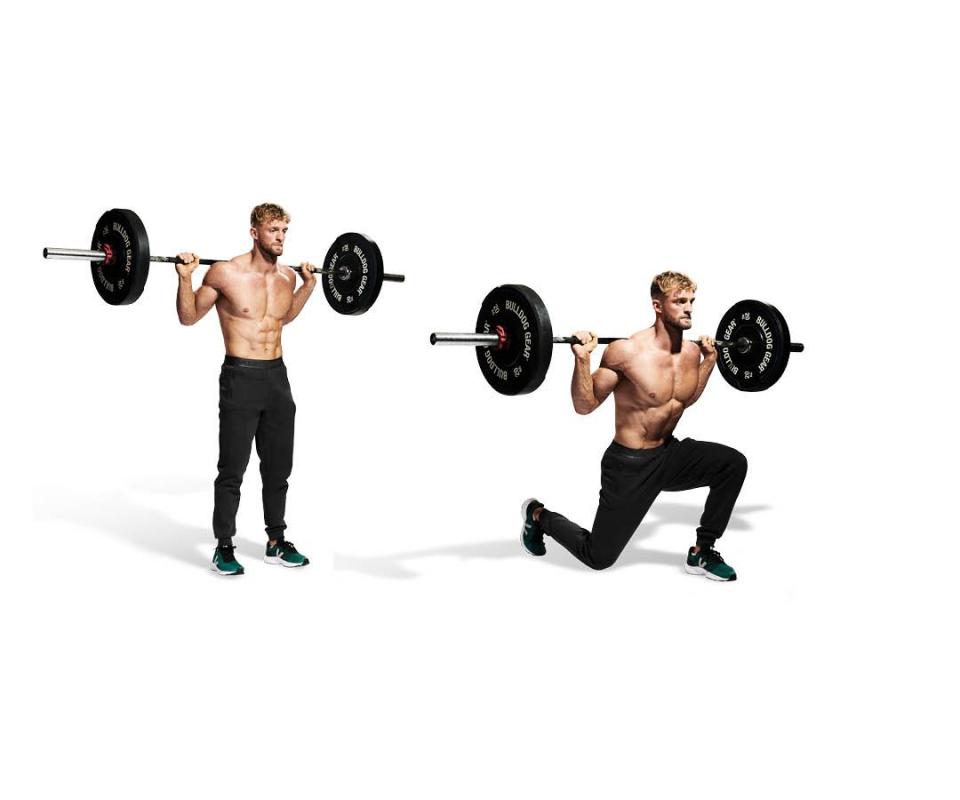
Lunge
How: Stand tall with the barbell on the meaty part of your shoulders, behind your head. Keeping your chest up at all times, take a long step forward with one leg, bending your front knee until the back knee touches the ground. Stand up explosively through the front leg so that you return to your starting position and repeat with the other leg.
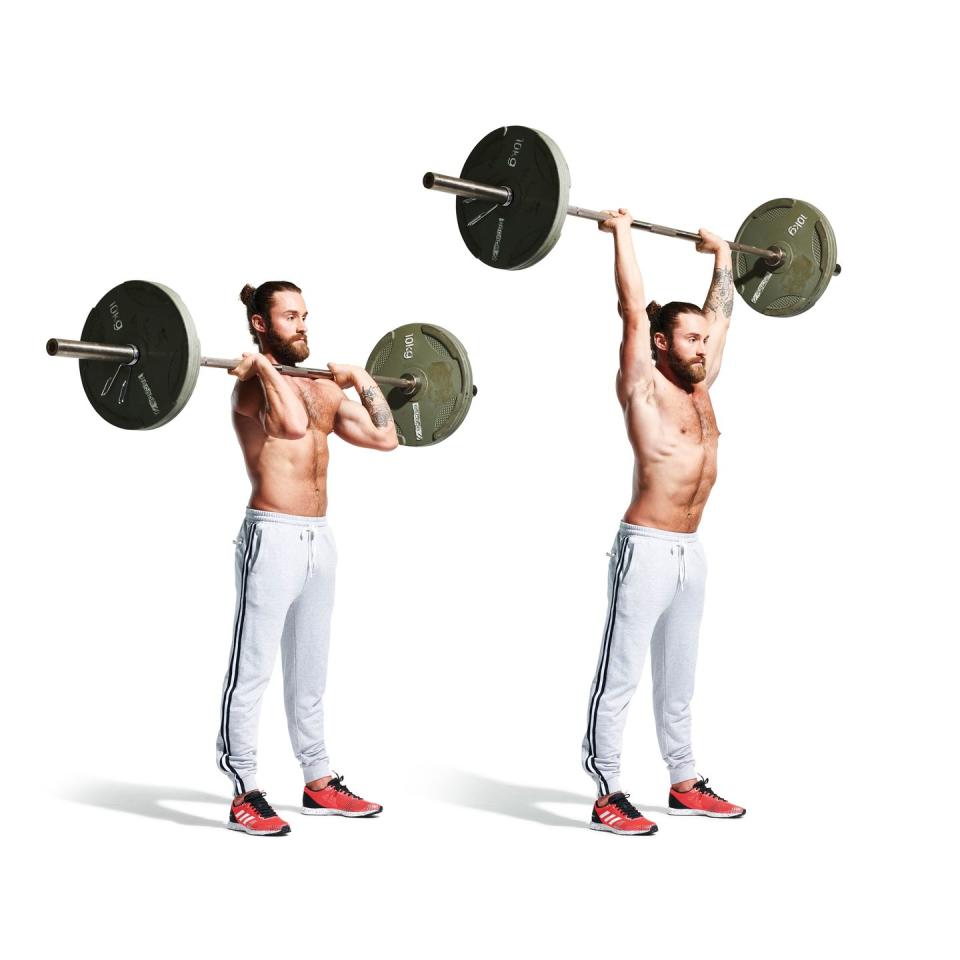
Shoulder Press
How: Hold the barbell in the front-rack position with the elbows high. Take a breath and brace your core. Press the barbell overhead, while keeping the chest open. Lower under control to your shoulders and repeat.
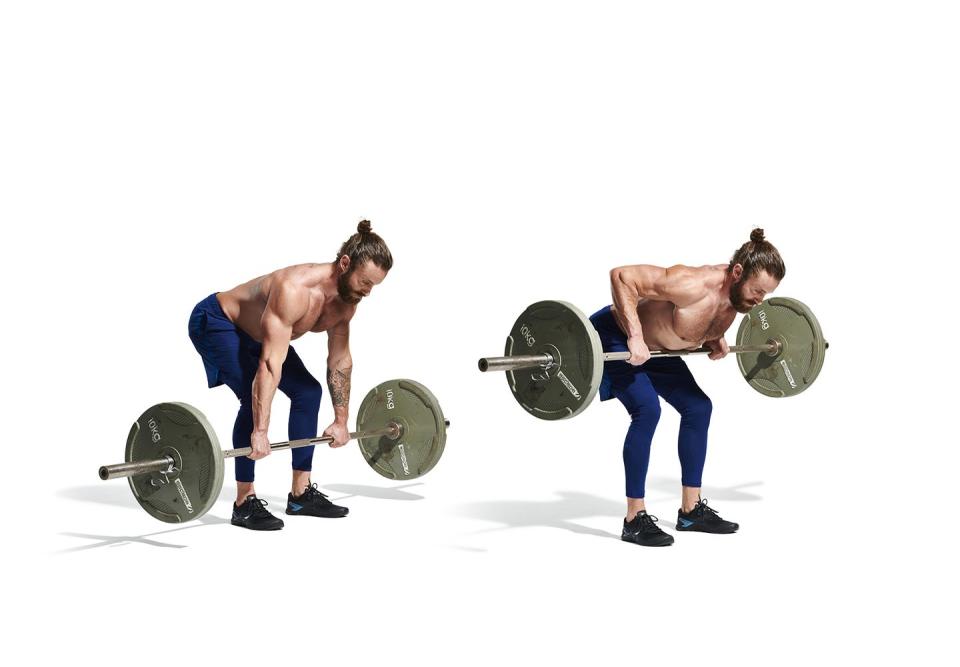
Bent-Over Row
How: Lower your barbell to your waist and hinge at the hips until your chest is parallel to the floor and the is barbell hanging at your shins. Maintaining a flat back, row the bar towards your torso, squeeze your shoulder blades together and lower under control to the start before repeating. Control the bar and avoid moving your torso but keep the pulls explosive.
Top 10 Compound Exercise Workouts
The Men's Health Dumbbell Club: Your New Three-Day Full-Body Muscle Plan
We Tried Arnold Schwarzenegger's 'Golden Six' Barbell Workout
Using the ‘EMOM Strong’ Method You Can Add Strength and Muscle Every Week
Welcome to Week One of Your New Three-Day Full-Body Dumbbell Plan
You Might Also Like


